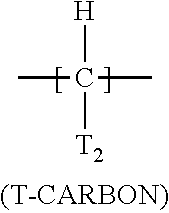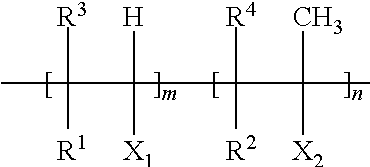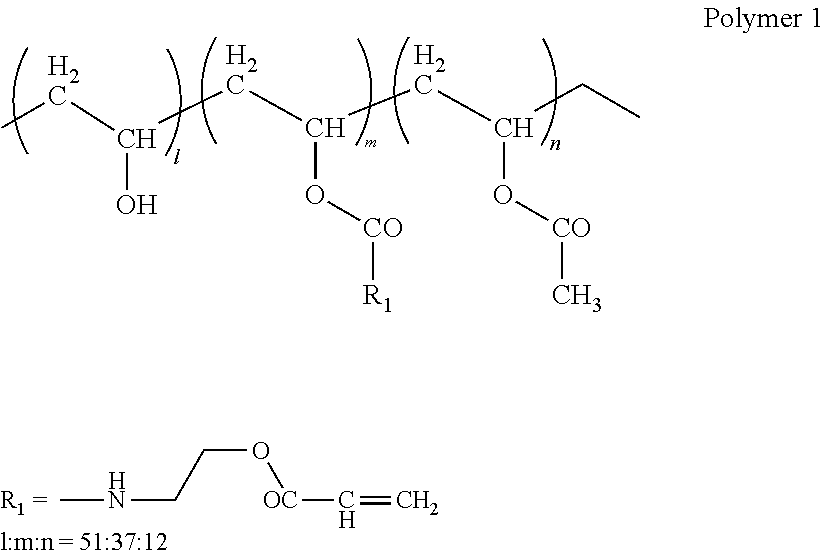Aluminum substrates and lithographic printing plate precursors
a technology of lithographic printing plate and substrate, applied in the field of aluminum substrates and lithographic printing plate precursors, can solve the problems of difficult to meet both requirements, two important requirements often work against each other, and the substrate can exhibit poor adhesion to the overlying radiation-sensitive composition, etc., to achieve the effect of improving the adhesion of the radiation-sensitive imageable layer to the sulfuric acid anodized substra
- Summary
- Abstract
- Description
- Claims
- Application Information
AI Technical Summary
Benefits of technology
Problems solved by technology
Method used
Image
Examples
embodiment 1
[0179]2. The substrate of embodiment 1 wherein the non-crosslinked hydrophilic polymer is present at a dry coverage of at least 0.001 g / m2 and up to and including 0.4 g / m2.
[0180]3. The substrate of embodiment 1 or 2 wherein the non-crosslinked hydrophilic polymer has partially neutralized carboxylic acid side chains.
[0181]4. The substrate of any of embodiments 1 to 3 wherein the non-crosslinked hydrophilic polymer has carboxylic acid side chains that are neutralized to a degree of at least 1 mol % and up to and including 60 mol %.
[0182]5. The substrate of any of embodiments 1 to 4 wherein the hydrophilic layer is a releasable layer.
[0183]6. The substrate of any of embodiments 1 to 5 wherein the hydrophilic layer is present at a dry coverage of at least 0.01 g / m2 and up to and including 0.3 g / m2.
[0184]7. The substrate of any of embodiments 1 to 6 wherein the hydrophilic layer is a non-radiation-sensitive hydrophilic layer.
[0185]8. The substrate of any of embodiments 1 to 7 wherein th...
embodiment 11
[0189]12. The precursor of embodiment 11 that is a negative-working lithographic printing plate precursor having a negative-working radiation-sensitive imageable layer comprising a free radically polymerizable compound, the radiation absorber, and a compound to generate free radicals upon irradiation.
[0190]13. The precursor of embodiment 11 or 12 that is a negative-working lithographic printing plate precursor having a negative-working, infrared radiation-sensitive imageable layer comprising a free radically polymerizable compound, an infrared radiation absorber, and a compound to generate free radicals upon irradiation.
[0191]14. A method of preparing a lithographic printing plate comprising:
[0192]imagewise exposing the lithographic printing plate precursor of any of embodiments 11 to 13 to provide an exposed precursor having exposed and non-exposed regions in the radiation-sensitive imageable layer, and
[0193]processing the exposed precursor to remove either the non-exposed regions ...
embodiment 14
[0194]15. The method of embodiment 14 wherein the processing further removes the hydrophilic layer in either the non-exposed regions or the exposed regions that are removed.
[0195]16. The method of embodiment 14 or 15 wherein the lithographic printing plate precursor is a positive-working lithographic printing plate precursor, and processing the exposed precursor is carried out off-press to remove the exposed regions to provide a lithographic printing plate using an alkaline processing solution.
[0196]17. The method of embodiment 14 or 15 wherein the lithographic printing plate precursor is a negative-working lithographic printing plate precursor, and processing of the exposed precursor is carried out off-press using water or an alkaline processing solution to remove the non-exposed regions to provide a lithographic printing plate.
[0197]18. A lithographic printing plate obtained by the method of any of embodiments 14 to 17 wherein the lithographic printing plate comprises a substrate ...
PUM
 Login to View More
Login to View More Abstract
Description
Claims
Application Information
 Login to View More
Login to View More - R&D
- Intellectual Property
- Life Sciences
- Materials
- Tech Scout
- Unparalleled Data Quality
- Higher Quality Content
- 60% Fewer Hallucinations
Browse by: Latest US Patents, China's latest patents, Technical Efficacy Thesaurus, Application Domain, Technology Topic, Popular Technical Reports.
© 2025 PatSnap. All rights reserved.Legal|Privacy policy|Modern Slavery Act Transparency Statement|Sitemap|About US| Contact US: help@patsnap.com



